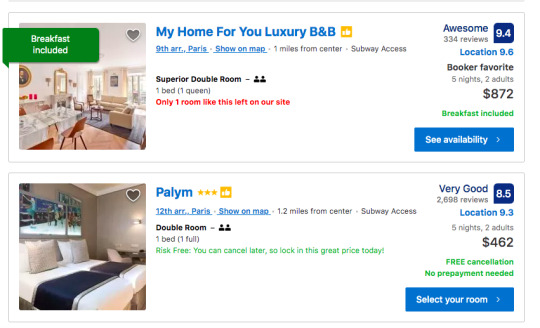Text
Turning around Royal Enfield

The Burberry case reminded me of the fantastic turnaround story of Royal Enfield, an iconic Indian motorcycle brand. The brand, operated by Eicher motors in India, was almost a hundred years old but had lost its sheen by early 2000s. The company was on the verge of bankruptcy. But, Siddharth Lal - the newly appointed CEO - pulled out a miracle and turned Royal Enfield into one of the most popular and profitable brands in India within less than a decade.
The success can be attributed to a lot of things: major product improvements, better distributions and sales processes and countless cost & efficiency optimisations. But the key to turnaround was a change in branding strategy. The CEO changed the focus from commuters to leisure travellers. From just a sturdy bike, Royal Enfield became an expression on a person’s freedom and sense of adventure. This not only created a new cult following for the bike, it changed the fortunes of the company and its shareholders.
0 notes
Text
Ranking the diffusion of four products
Analysing the 5 factors for product diffusion, I have tried to rank the products that I believe will be more successful than other in the long run.
Ranking by probability of success (Highest to lowest):
1. Polytrack: I believe this product has the highest chance of becoming a widespread standard in the industry. The product arose out of the first-hand need of the inventor. More importantly, it’s relatively advantage over alternatives in terms of safety is manifold. It’s not complex to understand, though has limited trailability. Overall, as the product proves itself for a small segment (early adopters), it will gain favour with the early majority.
2. Chicken Salad: The puzzle is engaging and very addictive. It is developed by an investor who has huge experience in creating similar puzzles. While the relative advantage is only short-lived, the compatibility of the product is high and the complexity is low. It might not become the most dominant in its category, but it has the potential to be a success within its defined segment for a short while.
3. Collapsible wheel: I feel that this product has low chances of success in its present form or to the audience it was intended for. It seems it’s a new technology searching for a problem to solve. The relative advantage for bikes is not clear, neither is compatibility with existing setup. It’s not easy to install and its not easy to try. It might have some potential for a different segment and use case, where it can provide more value at lower risk and costs.
4. Sliced peanut butter: I feel this product has the least chance of success. I am not sure if the inventor himself would be an enthusiastic customer of the product as the idea arose not out of a genuine need, but a perceived want. There is little or no relative advantage over the alternative as spreading peanut butter on bread in not something people desist. On the contrary, the product deprives the eaters of all the possible customisations they can do with their sandwich. It’s not a lot less complicated as well. For all these reasons, I do not believe this product will be successful.
#2020mitsloanbrandingB
0 notes
Text
Booking.com is the king of nudges
Reading about Nudging, I could not help but think of Booking.com, one of the most popular hotel booking websites in the world. It does an excellent job of providing right kids of cues and nudges across its user experience to enable faster bookings.
The snapshot from Booking.com below provides great examples of some of the nudges in a single view:
1. Peer Influence: The reviews are highlighted prominently on top right. The rating of 9.4 along with highlighted text ‘Awesome’ subconsciously confirms to the user that it’s a great property.
2. Choice Engine effect: (Preference feedback engine): Many hotels include breakfast in the reservation, but this fact is very prominently highlighted in bright green colors on two places, the room image and just above Call-To-Action button. Also, Green color is associated with positive emotions and that’s the effect this text has on the user.
3. Connectivity effect (Other individual’s preferences): Right above the price and below the customer reviews, there is a small text that says ‘Booker favourite’. Similar to peer effect, this leads the user to believe that she has chanced upon a great deal.
4. Scarcity effect: The line “Only 1 room like this left on our site” creates a very strong scarcity effect, nudging the user to act urgently. In contrast to the “Breakfast Included” text highlighted in green, the text here is highlighted in red to evoke emotion of “fear”

Many such nudges are embedded in Booking.com’s full user experience. It has arrived on these nudges after endless iterations of A/B testing performed over prolonged periods of time to maximise it’s conversion rates.
#2020mitsloanbrandingb
#2020mitsloanbrandingB
0 notes
Text
Intel reminds me of Android to some extent

The biggest thing that stuck me thinking about the ‘Intel Inside’ case was that it has a huge consumer appeal, even when consumers don’t buy Intel products directly. But because consumers prefer Intel, they would only buy PCs that have “Intel Inside” them and that forces the PC manufacturers to design PCs with Intel chips.
In some ways, Android achieves a similar effect. It’s the largest open-source mobile operating system in the world and has powerful network effects. But apart from network effects, Google invests significant resources in branding the Android operating system. This results is that users trusting Android devices more than other open-source operating systems. While Android now has a huge market share, this was not the case at the start of the last decade. About 10 years back, a lot of consumers like myself chose Android over Microsoft’s Windows operating system because of the brand Android had created.
In the case, Intel didn’t deliberately choose to create a consumer brand. It was forced to do so because there was no or very little demand for 386 processors. But one of the biggest reasons it worked so well was because they matched their innovation in product design with originality and boldness in advertizing.
The case gives food for thought on how one can create consumer brands even on products that consumers don’t buy directly.
#2020mitsloanbrandingB
5 notes
·
View notes